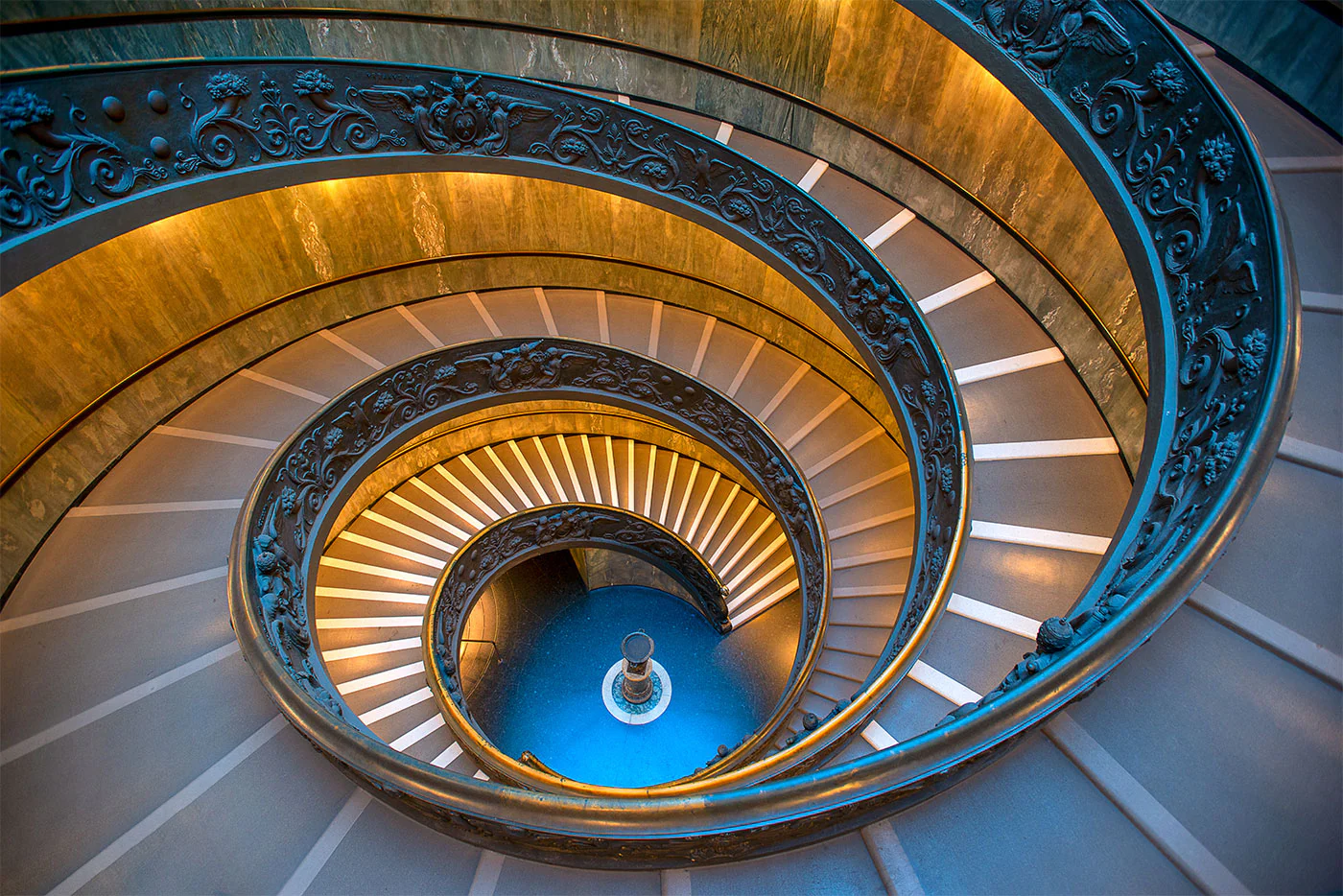Architectural Wonders of the Vatican Museums - Design & Structure
Explore the architectural design of the Vatican Museums, from Bramante’s spiral staircase to the courtyards that bridge art and eternity.

Behind every masterpiece in the Vatican Museums lies another masterpiece — the architecture itself.
The Museums are a labyrinth of art and space, designed over centuries by some of the greatest minds of the Renaissance and Baroque eras.
The story begins with Donato Bramante, who in the early 16th century designed the original Bramante Staircase.
This double-helix marvel — centuries ahead of its time — allowed visitors and horses alike to ascend without ever crossing paths, a symbol of divine order through geometry.
Its modern counterpart, completed in 1932 by Giuseppe Momo, pays tribute to the same harmony of motion and grace.
The Vatican’s courtyards, like the Cortile del Belvedere, were conceived as open-air museums long before the concept existed. Here, ancient sculptures were displayed against the Roman sky, creating a dialogue between past and present — art liberated from walls, architecture transformed into philosophy.
Each hall and gallery has a character of its own:
- The Maps Gallery dazzles with its golden ceiling and painted cartography of 16th-century Italy.
- The Raphael Rooms unfold as a symphony of humanist ideals rendered in fresco.
- And the Sistine Chapel remains the ultimate architectural and artistic crescendo — where space itself seems to breathe divinity.
What unites all these spaces is the Vatican’s vision: architecture as theology in stone.
Every vault, stairway, and courtyard was built not just for function, but to elevate the soul.
About the Author

Architectural Writer
A cultural enthusiast and traveler, I created this site to help visitors navigate the Vatican Museums and experience its world-class art collections.
Tags
Comments (0)
Loading comments...